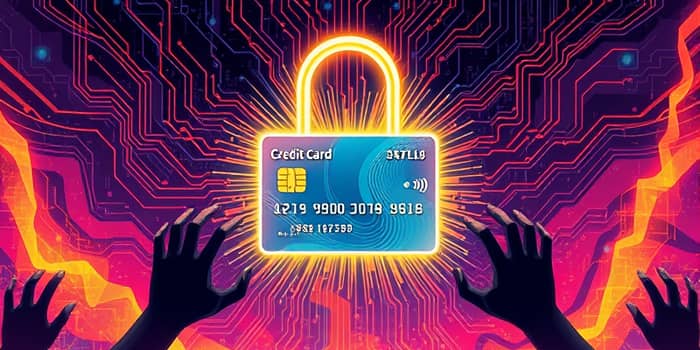
Every day, millions of consumers and businesses face a hidden enemy lurking behind familiar swipe machines, online checkouts, and unsolicited emails. Credit card fraud is no longer just a nuisance—it has become a sophisticated, global threat that evolves with each technological advance. Whether you’re shopping in person or making a purchase with a mobile wallet, understanding these scams can mean the difference between safety and devastating loss.
Consumer fraud losses reached a staggering $12.5 billion in 2024, marking a 25% increase over the previous year. Nearly 450,000 reports of credit card identity theft were filed with the FTC, making it the most common form of identity fraud. These numbers aren’t just statistics; they represent real people, families, and businesses whose trust was shattered.
As of mid-2024, bot-led fraud attacks have doubled, and 79% of organizations report a payment fraud incident. Technology that could protect us has also empowered criminals, and we must adapt just as quickly to stay one step ahead.
Fraudsters deploy an array of tactics to steal your card information, ranging from simple physical devices to cutting-edge AI. Understanding these methods is the first line of defense.
Additional schemes include fake online stores, imposter scams promising reduced interest rates, and overcharge/refund cons that push malicious links or request details under the guise of repayment.
Advancements in machine learning and automation have empowered both sides of this digital battlefield. On one hand, criminals use bots for credential stuffing attacks at scale, rapidly testing leaked passwords to hijack accounts. On the other, financial institutions deploy AI-driven anomaly detection to flag unusual transactions in real time.
Mobile wallets and virtual cards now generate unique, one-time-use numbers for each purchase, drastically reducing the risk of data reuse. However, as we fortify one vulnerability, attackers innovate new entry points through social engineering and sophisticated deepfakes.
As a cardholder, you are not powerless. By adopting a proactive mindset and practical habits, you can greatly reduce your risk of falling victim to fraud.
For merchants and financial institutions, the stakes are even higher. A single breach can tarnish reputations and incur regulatory penalties. To defend against advanced threats, organizations should implement:
Continuous monitoring and auditing tools to analyze transaction patterns, enforce strict access controls limiting internal risks, and require transaction verification for large or unusual transfers. Staff training on the latest scams is vital to closing the human loophole that technology alone can’t seal.
If you suspect unauthorized charges, act swiftly. Contact your card issuer to report the fraud and request a temporary freeze. Under $0 liability protection, major card networks shield you from most fraudulent losses when you report promptly.
Next, file a report with the FTC and your local law enforcement. Obtain free credit reports from all three bureaus and consider placing a fraud alert or credit freeze. Document every communication and keep records—it accelerates recovery and helps authorities pursue perpetrators.
The war against credit card scams will continue to evolve. Expect deeper integration of behavioral analytics and biometrics, making it harder for imposters to mimic genuine users. Financial institutions will invest heavily in bot detection to distinguish human interactions from automated attacks.
Meanwhile, consumers can anticipate more robust mobile wallet features, including dynamic CVV codes and voice authentication. By staying informed, practicing vigilance, and leveraging the latest tools, you can transform from a potential target into a fortified defender of your own financial security.
Credit card scams thrive on secrecy and complacency. By shining a light on their methods and adopting simple yet powerful protections, we reclaim control over our finances. Share this knowledge with friends and family, and inspire your community to stand guard against sophisticated threats. Together, we can outpace fraudsters and safeguard our digital future.
References













